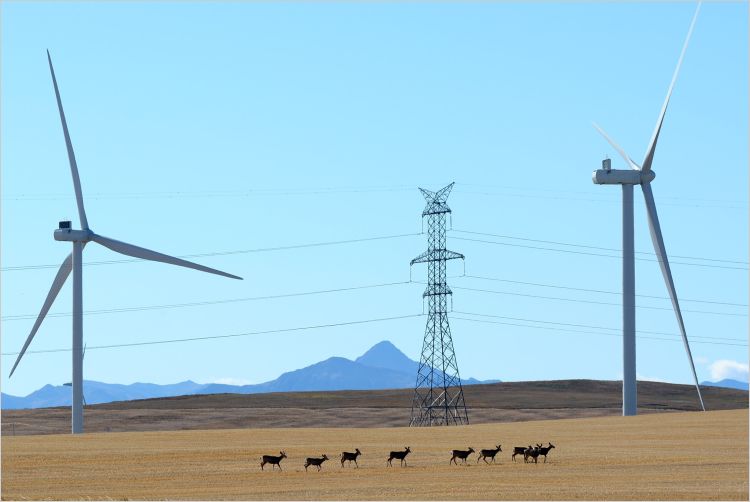
Wind energy in Alberta. Photo: Roberta Franchuk, Pembina Institute
CALGARY — Jason Wang, senior analyst with the Pembina Institute's Electricity program, made the following statement in response to a document released Wednesday by the Alberta Electric System Operator (AESO) that contained comments on the federal Clean Electricity Regulations.
“The Alberta Electric System Operator’s conclusion that the Clean Electricity Regulations (CER) will lead to a reliability risk in 2035 is based on modelling that they have failed to share. This is a big claim to be issued in a two-page report. We ask AESO to release the full analysis that supports this claim, including its assumptions for growth in renewable energy, storage, transmission interties and natural gas with carbon capture.
“Over the last few months, the Government of Alberta has continued to argue that decarbonizing the grid by 2035 is not possible for the province, yet it has released no analysis, modelling results or data supporting these claims. The Ministry of Affordability and Utilities did commission modelling, completed in January 2023 by ICF Consulting, to understand the impacts of the CER and reaching net-zero electricity by 2035 in Alberta. This report has not seen the light of day.
“The risk in working with this new conclusion is that it hamstrings Alberta’s ability to plan for a transition to a low-carbon, affordable and reliable electricity system.”
Background
The Pembina Institute’s 67-page report published in June 2023, entitled Zeroing In: Pathways to an affordable net-zero grid in Alberta, identified six scenarios where Alberta decarbonizes its grid affordably and reliably by 2035.
Our modelling, completed in partnership with the University of Alberta, shows decarbonizing Alberta’s electricity grid would save Albertans more than $600 per household in annual electricity costs.
The draft CER is a landmark regulation that provides policy certainty and pathways to achieving the interim 2035 decarbonization target for electricity emissions that is necessary to achieve a net-zero economy by 2050. It also provides flexibilities that support the provinces in deciding what form of clean power is best suited for their respective energy needs while they work towards achieving a net-zero grid by 2035.
The CER also aligns with the International Energy Agency (IEA)’s recent net-zero emissions by 2050 scenario. Net Zero Roadmap: A global pathway to keep the 1.5C goal in reach, updated just this week, finds all advanced economies can achieve net-zero electricity emissions and need to reduce emissions by 80 per cent by 2035. The IEA highlights that ramping up electrification using already available technology, such as renewables and energy efficiency, will deliver more than 80 per cent of emissions reductions needed in the energy sector by 2030 – critical for limiting global warming to 1.5C.
Jason Wang, a senior analyst with the Pembina Institute’s Electricity program, is available for comment.
-30-
Contact
Hanneke Brooymans (English)
Senior Communications Lead, Pembina Institute
587-336-4396
Background
Report: Zeroing In: Pathways to an affordable net-zero grid in Alberta
Blog: Alberta’s Renewable Energy Advantage
Fact sheet: Investment Impact of Alberta’s Renewable Energy Moratorium